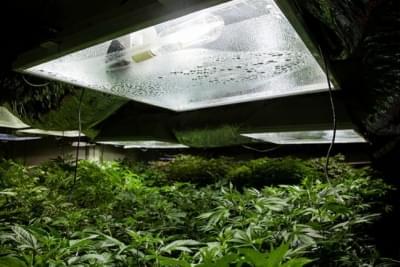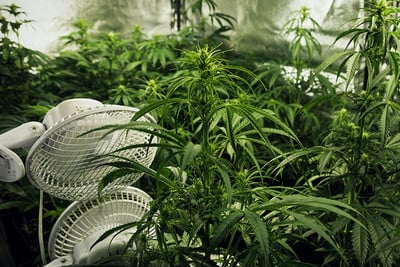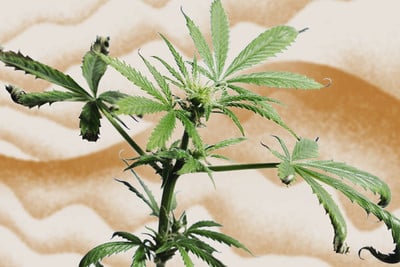.

How Can Vapour Pressure Deficit (VPD) Boost Cannabis Yields?
Vapour pressure deficit, or VPD, refers to the difference between the moisture present in your growing space and the amount of moisture the air could theoretically hold. Why should you, as someone wanting to grow the stickiest buds possible, care about this measurement? Because it could help you push your yields even further!
As an indoor cannabis grower, you’re used to monitoring and adjusting temperature and humidity, but have you heard of vapour pressure deficit? It’s intimately linked to both of these variables, and focusing on it could bring your yields to the next level. Find out everything you need to know below.
Contents:
- What is vapour pressure deficit (vpd)?
- Why is vapour pressure deficit important?
- How does vapour pressure deficit affect plant growth and yields?
- How to calculate vapour pressure deficit
- Cannabis vpd chart
- How to alter the vpd of your growing environment
- Should you focus on vpd for optimal bud development?
What Is Vapour Pressure Deficit (VPD)?
If you grow weed indoors, you'll know just how in control you are over several environmental variables. Unlike growing weed out in the garden, the artificial setting of a grow tent gives you almost complete sway over factors such as temperature, humidity, light intensity, watering, and so on.
Carefully maintaining all of these variables within the desired ranges helps growers to steer their plants towards optimal health and enjoy the subsequent fruits of superior yields. However, the more experienced growers reading this article may have noticed a key variable missing from those mentioned previously: VPD.
Also known as vapour pressure deficit, VPD serves as yet another parameter that skilful indoor growers can tinker with to enhance plant growth. Once understood and applied, playing around with VPD can enhance crucial metrics, such as nutrient uptake and yield.
So, you know that you can influence VPD, and you’re aware of some of its benefits. But what exactly is it? Simply put, it’s a measure of the drying power of the atmosphere within the growing environment, which can affect the transpiration rate of your weed plants.
More precisely, VPD is the difference between the amount of moisture currently in the air and the amount of moisture the air in the growing space could theoretically hold. These two factors are represented by relative humidity and saturated vapour pressure (SVP), respectively. This might seem fairly mundane and unimportant, but it can have a big impact on the health and productivity of your cannabis plants.
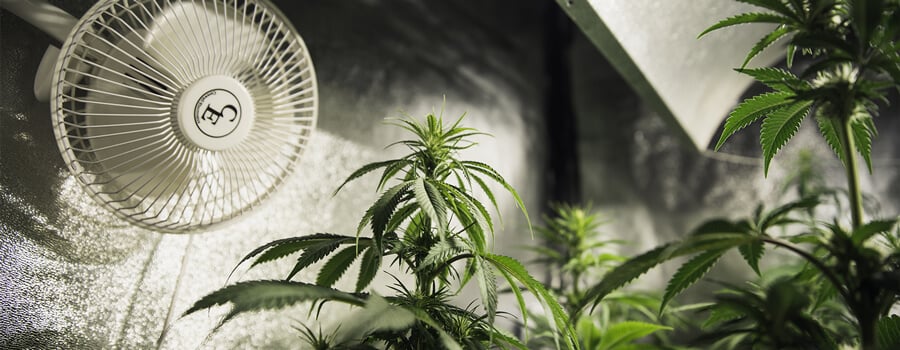
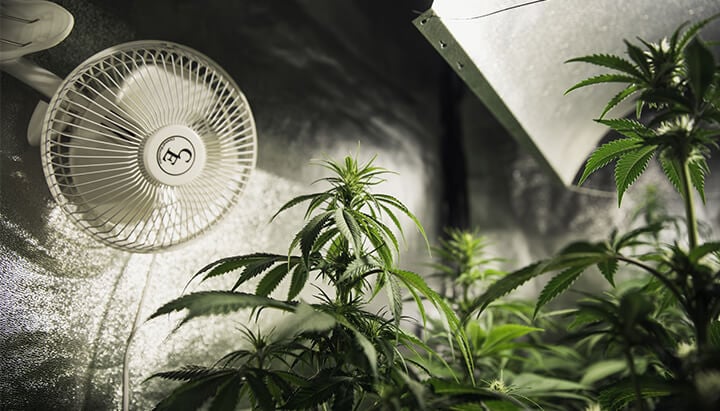
Why Is Vapour Pressure Deficit Important?
Even head growers at expensive growing facilities find VPD hard to manage precisely. However, just being aware of it, and making a slight effort to nudge it in the right direction, can help your plants thrive. VPD has become an area of interest for horticulturalists because it either drives transpiration in plants or it causes this process to dwindle.
Transpiration refers to a plant’s loss of water through its leaves. This process might seem simple enough, but it holds significant sway over plant physiology and health. If you’ve ever grown plants, from cannabis to carrots, you’ll know that they require a fair amount of water. But plants don’t hold on to the vast majority of the water that they uptake through the soil. In fact, they lose around 99% of it through their leaves via transpiration. However, they’re not really losing it in the sense of it going to waste. Rather, it’s helping them to stay alive.
Transpiration at the leaf-atmosphere interface creates negative pressure. The intensity of this pressure can vary greatly depending on the external relative humidity (RH); high RH results in weaker negative pressure, whereas low RH increases it. This pressure creates a “tug” that pulls water up through the xylem vessels—tubes that transport water and form part of the vascular system of plants. The constant movement of water through plants keeps them upright and turgid, and also transports nutrients and water from the roots all the way up to the canopy.
So, transpiration keeps plants alive and developing well, and VPD has a big impact on this physiological process. Because growers can control VPD to a degree, they also have the ability to influence plant health and productivity by tinkering with this variable. Before we get into how to alter VPD, let’s explore how doing so will benefit your cannabis crop.
How Does Vapour Pressure Deficit Affect Plant Growth and Yields?
Before we delve into the world of VPD charts and modification techniques, discover why you should care about modulating vapour pressure deficit in the first place.
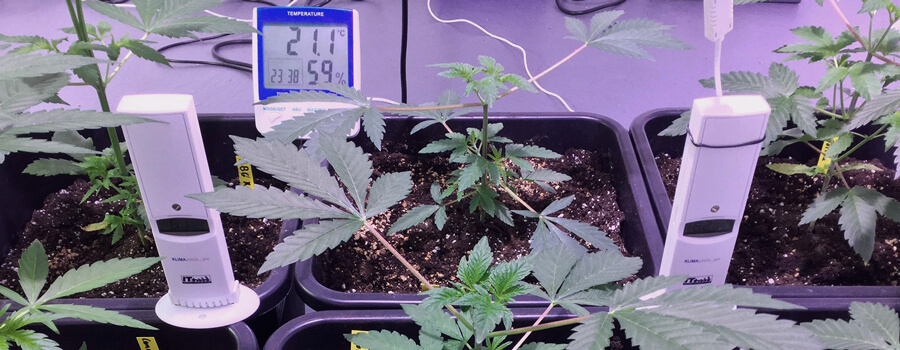
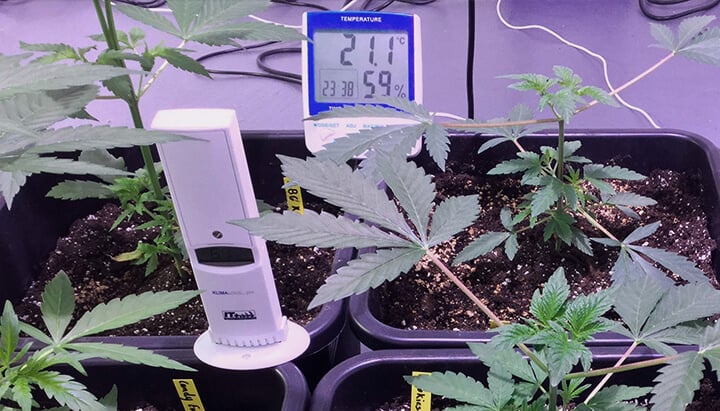
Photosynthesis
An excessively high vapour pressure deficit in your growing room will cause your plants to close their stomata. This protective mechanism will prevent them from losing too much precious water and also reduce dangerous water tension within the xylem. However, photosynthesis takes a hit[1] as the stomata are forced closed. You see, these small holes on the leaf surface serve as the entry point of the carbon dioxide that plants need to create sugars. Reduced photosynthesis means less energy and reduced growth and productivity.
Nutrient Uptake
The “pull” of negative pressure created at the leaf surface during transpiration has ripple effects down in the root zone. Here, it causes a mass flow[2] of nutrients towards the roots. Therefore, transpiration plays an important role in nutrient acquisition. Interestingly, the rate of transpiration hangs heavily on VPD. Low RH and high VPD reduce transpiration, whereas high RH and low VPD have the opposite effect.
Disease Prevention
Controlling vapour pressure deficit involves controlling relative humidity levels within the growing space. Indirectly, this can help to minimise the threat of plant diseases through a couple of different mechanisms. During the flowering phase, mature plants are prone to fungal infections that can ruin an entire harvest. Maintaining a high VPD, and therefore low levels of humidity, can help to reduce the chances of a pathogen taking hold. Earlier in the growing cycle, however, higher RH and lower VPD are more favourable. This boosts transpiration and nutrient uptake, which can help to prevent deficiencies that can also increase the odds of plant diseases.
Temperature Regulation
Temperature and VPD are closely tied and share a positive correlation[3]; higher temperatures are associated with higher VPD, and therefore lower RH. Maintaining the optimal VPD at the right time in the growing cycle can help to reduce leaf surface temperatures. By attempting to control VPD, growers can reduce excess water loss and reduce the signs, symptoms, and consequences of heat stress.
Yield Optimisation
Optimal VPD throughout the growing cycle translates to superior plant health, growth, and development. Naturally, this results in better yields come harvest time. As an important environmental variable, VPD not only unlocks bigger harvests[4], but it prompts plants to grow quicker and deliver the goods faster. Tinkering with VPD will help you unleash the true genetic potential of every cannabis cultivar that you grow.
How to Calculate Vapour Pressure Deficit
To get a handle on this figure, growers need to perform a calculation using two variables. First, they need to figure out the saturated vapour pressure (SVP)—the maximum amount of water the air can hold depending on its temperature.
Next, they need to measure the relative humidity of the growing space (the amount of moisture currently held in the air), also known as actual vapour pressure. Once a grower has both of these figures, they simply need to figure out the difference between the two. This sum is written using a unit for pressure known as kilopascals (kPa). The equation looks like this:
VPD (kPa) = saturation vapour pressure (kPa) − actual vapour pressure (kPa)
When running this calculation, you need to consider that the saturation vapour pressure of a growing space changes depending on the air temperature. By placing a hygrometer in your cultivation area, you can constantly measure both temperature and relative humidity. With these figures, you can use the chart below to easily work out VPD.
Cannabis VPD Chart
After collecting data with the help of your digital hygrometer, simply plug the figures in the chart below to unveil the VPD in your growing space.
Optimal VPD for the Vegetative Stage
If you’ve grown cannabis before, you’ll know that plants respond better to certain variables and inputs at different stages of the growing cycle. For example, plants like higher levels of nitrogen during the vegetative phase, but more phosphorus and potassium during bloom. In a similar vein, photoperiod plants need longer light cycles to remain in veg, and shorter periods of light exposure to enter the flowering phase.
Similarly, your weed plants will prefer different levels of VPD depending on their age and stage of growth. Every grow starts off with either a cutting or seed. Regardless of how you start your next round of cultivation, know that young plants thrive in an ideal VPD range of 0.4–0.8 kPa. These low VPD figures reflect high levels of humidity that help younger plants establish healthy root systems. This environment will limit transpiration and stop cuttings and seedlings from losing too much water.
Past the seedling stage, you’ll want to maintain a VPD range of 0.8–1.2 kPa. This will help your rapidly growing plants to strike a good balance when it comes to transpiration. They’ll bathe in enough moisture to develop properly without encountering moisture-related issues.
Ideal VPD for the Flowering Phase
Plants require different VPD ranges during the flowering stage. From the moment you see buds start to develop, try to maintain a range of 1.0–1.2 kPa. This will keep transpiration turning over, without letting humidity rise high enough to increase the risk of fungal pathogens. You’ll optimise bud development while preventing disease.
During the middle and later flowering stage, you’ll want to move VPD further along the scale from 1.4–1.6 kPa. Hovering around these variables will help your buds finish ripening and fight off fungal threats. This will bring your plants to the brink of high transpiration, teetering on over-transpiration—a state where they will dry out far too much. Try not to let your VPD exceed 1.6 pKa.
How to Alter the VPD of Your Growing Environment
Right then, you’re now aware of VPD, how it impacts cannabis plants, and ideal VPD ranges during cultivation. However, knowing the perfect ranges won’t get you very far if you’re not sure how to tweak VPD as a whole! Below, we’re going to show you the easiest ways to manage this variable.
Adjust Relative Humidity
As you can see from the chart above, relative humidity has a huge sway over VPD. Among all the variables that indoor cannabis growers deal with, humidity is one of the easiest to control. Simply instal a humidifier and/or dehumidifier into your growing space, depending on your default climate. You can also place humidity domes over seedlings and cuttings to keep moisture levels high.
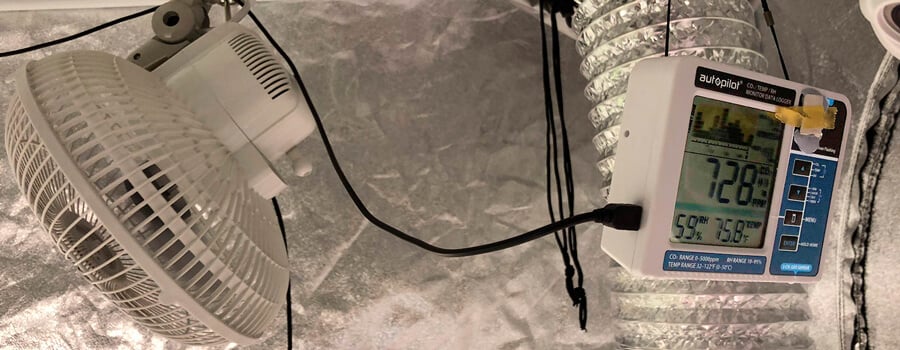
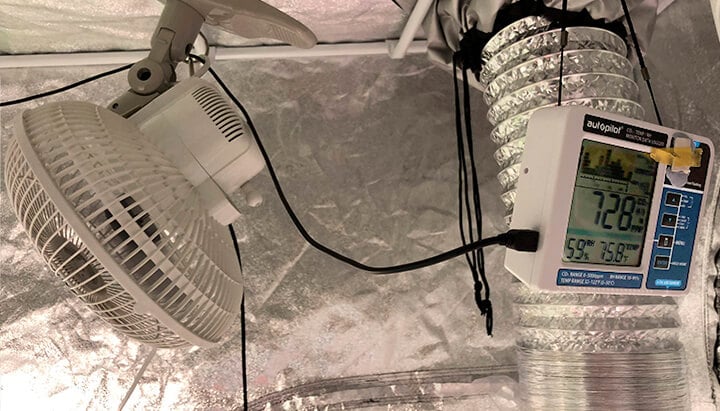
Control Temperature
Temperature also has a huge influence over VPD in that it determines saturation vapour pressure. You can keep constant tabs on temperature by frequently checking your digital thermo-hygrometer. If you ever need to adjust it, you have several simple options: air conditioners, heaters, and fans. In other words, HVAC has you covered!
Invest in VPD Controllers
If you want to get super fancy, link your system up to a controller and sensor to keep your space automatically regulated when it comes to humidity and temperature. You can purchase separate pieces of kit and link them together, or splash out on specific VPD controllers.
Maintain Proper Ventilation
The degree of airflow you maintain will change based on the VPD range you’re chasing. However, make sure to ensure at least some airflow during all stages of the growing cycle by way of fans and exhaust. This will help to maintain fresh air exchange and prevent humidity from becoming excessively high.
Experiment With Different Strains
Environmental factors play a huge role when it comes to growing weed, but so do plant genetics. You'll find that different strains respond differently to similar VPD ranges. Some might perform better within ranges that you find easier to maintain, whereas others might require more fuss. Grow some of your favourite genetics, and see how focusing on VPD influences your results.
Log Your Data
Make sure you record everything as you experiment—not only variables directly related to VPD, but also light intensity and nutrients. Should you stumble across a regimen that works and produces incredible results with a particular strain, you don’t want to lose the data!
Should You Focus on VPD for Optimal Bud Development?
Yes and no. Sorry for the ambiguous answer, but hear us out! Focusing on VPD should boil down to where you are on your growing journey. If you’ve only grown a couple of plants, then continue to focus on the very basics of cannabis cultivation. Resist getting lost in the weeds; wait for your green thumb to develop!
If you’re slightly more experienced and want to experiment with ways to boost your results, then try focusing on VPD for the next couple of grows. It’s not a magic bullet, but you might surprise yourself with slightly heavier yields, more pungent buds, and fewer instances of plant stress and disease.
- Plant responses to rising vapor pressure deficit https://nph.onlinelibrary.wiley.com
- The importance of nutritional regulation of plant water flux - PubMed https://pubmed.ncbi.nlm.nih.gov
- Increased vapor pressure deficit due to higher temperature leads to greater transpiration https://nph.onlinelibrary.wiley.com
- The importance of vapour pressure deficits (VPD) in agricultural plant growth | Farming Connect https://businesswales.gov.wales


























